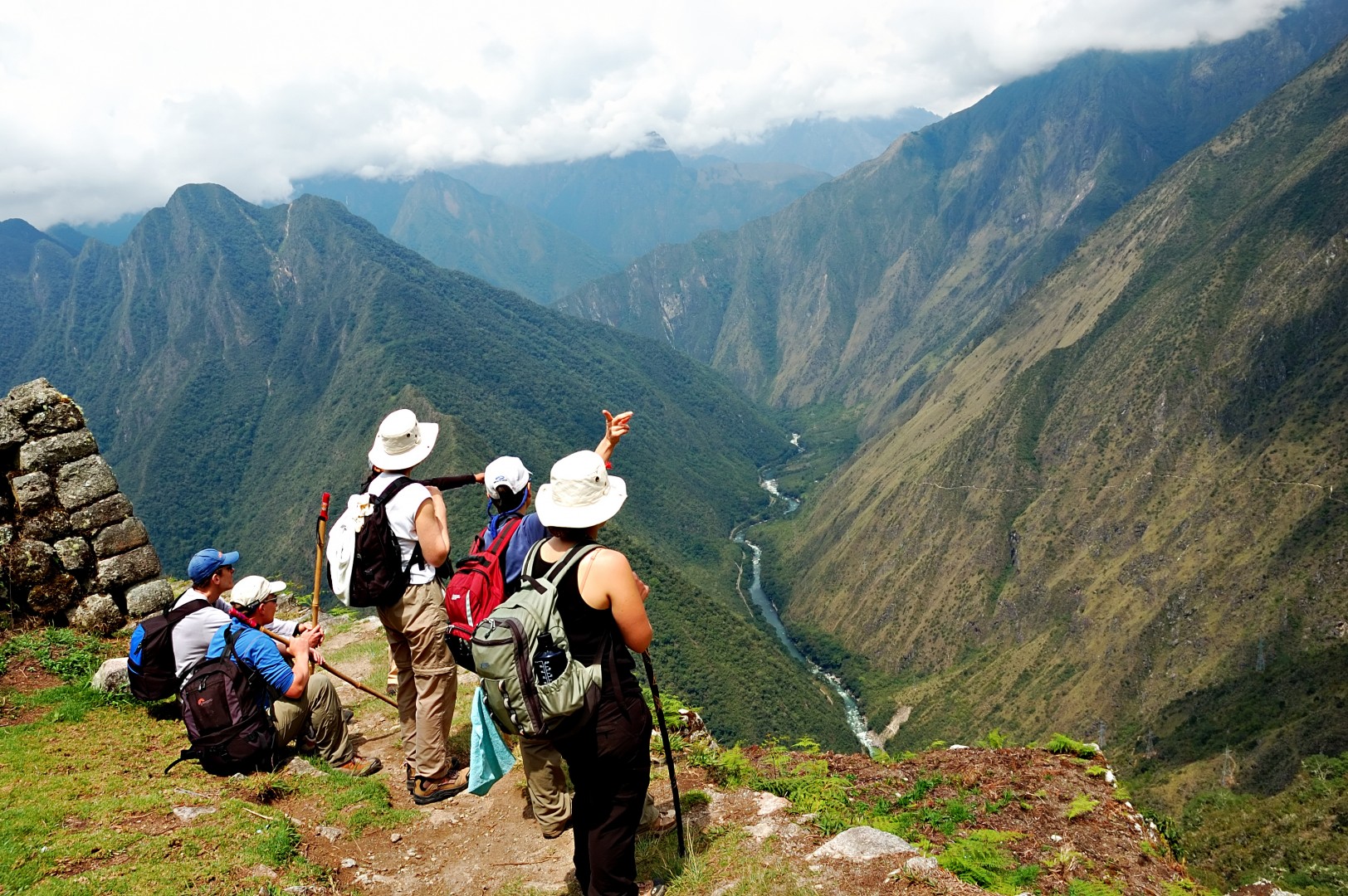The majestic citadel of Machu Picchu, nestled amidst the soaring peaks of the Peruvian Andes, is a place that stirs the soul. Its intricate stonework, breathtaking vistas, and rich history have captivated travelers for generations. But with such popularity comes a responsibility to ensure this wonder remains pristine for future explorers.
As a travel expert, I’ve always been fascinated by the way we interact with the world around us. Machu Picchu, a UNESCO World Heritage site, stands as a testament to the ingenuity of ancient civilizations and a beacon for sustainable tourism.
As you progress through this guide, you’ll discover how to experience the enchanting beauty of Machu Picchu as a responsible traveler, equipped with the knowledge and tools to minimize your environmental and cultural impact. You will also learn the innovative sustainability efforts being implemented at Machu Picchu, offer strategies for navigating crowds if you’re prone to anxiety, and share practical tips to ensure your journey is both enriching for you and beneficial for the destination.

Sustainable Practices Flourish at Machu Picchu
Machu Picchu has made significant strides towards becoming a beacon of sustainable tourism. Here’s a closer look at some of the key initiatives:
Destination Management: Spreading the Love (and Reducing Footprints)
One of the biggest challenges Machu Picchu faces is managing visitor influx. A 2022 study by UNESCO revealed that uncontrolled visitor numbers could lead to irreversible damage to the archaeological site. To address this, authorities have implemented a timed entry system, ensuring a steady flow and preventing overcrowding. Additionally, efforts are underway to disperse visitors beyond the main citadel by promoting alternative hikes like the Salcantay or Lares Trek, offering a more immersive and less crowded experience.
Imagine this: You arrive at Machu Picchu with the first rays of dawn painting the sky in hues of gold and pink. Thanks to the timed entry system, the crowds are minimal, allowing you to truly soak in the serenity and grandeur of the ancient city.
Waste Not, Want Not: A Circular Economy Takes Root
Machu Picchu’s journey towards carbon neutrality is a remarkable feat. In 2021, it became the first Wonder of the World to achieve this prestigious status, a testament to its commitment to responsible waste management. A key player in this success story is the innovative partnership between Inkaterra, a renowned sustainable hospitality chain, and AJE, a leading beverage company. Their collaboration resulted in the donation of a compacting machine that now processes a staggering seven tons of plastic waste daily. But the story doesn’t end there. Organic waste is ingeniously converted into biochar, a nutrient-rich fertilizer, which is then used to reforest the surrounding Andean cloud forest. This circular economy approach ensures minimal waste ends up in landfills, contributing to a healthier environment for both the local community and the unique ecosystem.
Community & Culture: Weaving a Sustainable Future Together
Sustainable tourism goes beyond environmental responsibility; it’s about fostering cultural respect and empowering local communities. When you choose local guides, you gain invaluable insights into the rich history and traditions of the Inca people. These guides, often descendants of the very people who built Machu Picchu, earn fair wages, ensuring the continuation of their cultural heritage for generations to come. Supporting local businesses extends beyond guides. Opting for locally-owned restaurants and shops allows you to experience authentic Peruvian cuisine and handcrafted souvenirs while ensuring a significant portion of your tourist dollar directly benefits the community.
Imagine this: You savor a steaming plate of Lomo Saltado, a vibrant Peruvian dish, prepared by a local chef who shares stories about their ancestors and the significance of Machu Picchu in their culture.
Where to Avoid Crowds with Anxiety
While Machu Picchu is undoubtedly a breathtaking sight, large crowds can be overwhelming for some travelers, especially those with anxiety. Here are some strategies to navigate the crowds and enjoy a peaceful experience:
- Physical Discomfort and Altitude Sickness: The high altitude and the physical demands of the trek can exacerbate anxiety symptoms. For example, the author of the article from 1 experienced severe headaches and altitude sickness, which can be overwhelming for someone with anxiety. The physical discomfort and the need to constantly monitor one’s health can add to the anxiety experienced during the trek.
- Crowded Trails and Campsites: The trails and campsites at Machu Picchu are often crowded, especially during peak tourist seasons. Being surrounded by a large number of people can be overwhelming and stressful for individuals with anxiety. The constant need to navigate through crowds, find privacy, and manage interactions with others can be challenging.
- Lack of Privacy and Solitude: Machu Picchu is a popular tourist destination, and the lack of privacy and solitude can be distressing for those with anxiety. The constant presence of other tourists, especially in shared accommodations like tents, can be overwhelming. The need to share spaces and manage interactions with others can exacerbate anxiety symptoms.
- Challenging Environment: The environment at Machu Picchu, with its steep trails and sparse vegetation, can be daunting for individuals with anxiety. The physical challenges of the trek, combined with the altitude, can make the experience more stressful and anxiety-inducing.
- Limited Control Over Environment: The experience at Machu Picchu involves a lot of unpredictability and limited control over the environment. The weather, trail conditions, and other factors can change rapidly, making the experience more stressful for those with anxiety.
For individuals with anxiety, it’s crucial to plan their visit to Machu Picchu carefully, considering factors like the time of year, the specific route they choose, and whether they opt for a guided tour or an independent trek. It might also be beneficial to have a supportive travel companion or guide who can help manage anxiety symptoms during the trek.
Sustainable Travel Tips for Your Machu Picchu Adventure
Now that you’re armed with knowledge about Machu Picchu’s sustainability efforts, let’s explore practical tips to ensure your journey is an eco-conscious one:
- Pack Like a Pro: Embrace reusables! Invest in a sturdy water bottle, food containers, and shopping bags to eliminate the need for single-use plastics. Machu Picchu has implemented a ban on single-use plastic bottles, so a reusable bottle is not just environmentally friendly, but essential.
- Leave No Trace: Imagine yourself as a silent guest in this magnificent open-air museum. Always dispose of waste responsibly by utilizing designated bins. Avoid littering or leaving any personal belongings behind.
- Tread Lightly: Stay on designated trails to prevent erosion and respect the fragile ecosystem. Minimize noise pollution and be mindful of wildlife. Remember, you’re sharing this space with a fascinating array of creatures, from the majestic Andean condor to the playful vizcacha (rabbit-like rodent).
- Support Local Communities: As mentioned earlier, your tourist dollar has the power to make a positive impact. Opt for locally-owned restaurants and shops, and choose accommodations that demonstrate a commitment to sustainability practices. Look for certifications like Rainforest Alliance or Fair Trade when making your decisions.
- Embrace the Power of Knowledge: Before embarking on your journey, brush up on Inca history and etiquette. Understanding the cultural significance of Machu Picchu allows you to appreciate it on a deeper level and interact respectfully with the local people.
FAQs About Sustainable Tourism in Machu Picchu
Here are some frequently asked questions to address any lingering concerns you might have:
Q1: Is Machu Picchu overcrowded?
ANS: While Machu Picchu can get crowded, especially during peak season, the implemented limitations on visitor numbers and timed entry system significantly improve the experience. By planning your trip strategically and considering alternative hikes or exploring during the shoulder seasons (April-May or September-October), you can minimize crowds and maximize your enjoyment.
Q2:How can I offset my carbon footprint?
ANS: Many travel companies offer carbon offset programs that allow you to neutralize the environmental impact of your flight. These programs typically invest in renewable energy projects or tree-planting initiatives. Inquire with your travel provider to see if they offer such options.
Q3: What are some sustainable travel companies in Peru?
ANS: Research is key! Look for companies that prioritize responsible tourism practices. Certifications like Rainforest Alliance Verified or Travel life for Tour Operators can be a good starting point. Investigate the company’s commitment to waste management, local community support, and environmental conservation.
Conclusion
Machu Picchu stands as a testament to the ingenuity and artistry of the Inca civilization. By embracing sustainable travel practices, you become an active participant in preserving this wonder for generations to come. Imagine yourself returning from your trip with not just breathtaking photos, but also a sense of having contributed to a positive future for Machu Picchu and its surrounding communities. So, pack your bags with a spirit of adventure and a commitment to sustainability. Let’s embark on this journey together, ensuring that the magic of Machu Picchu continues to inspire awe and wonder for years to come.
Also Read: Boating Hazard Awareness, Tips And FAQs



